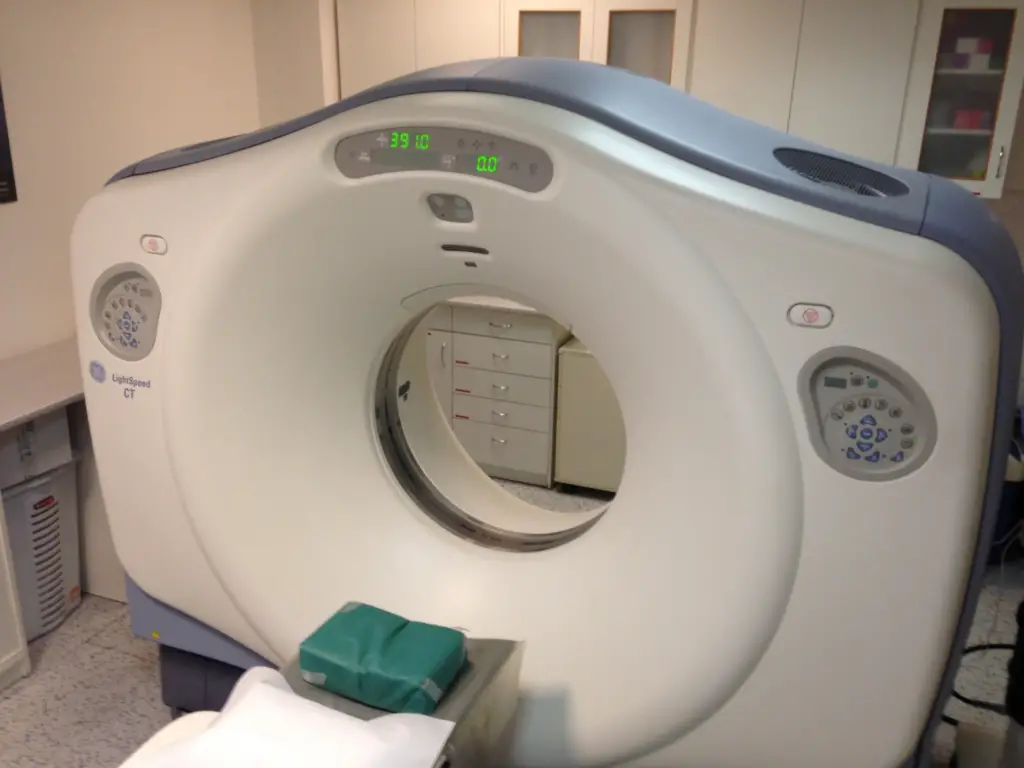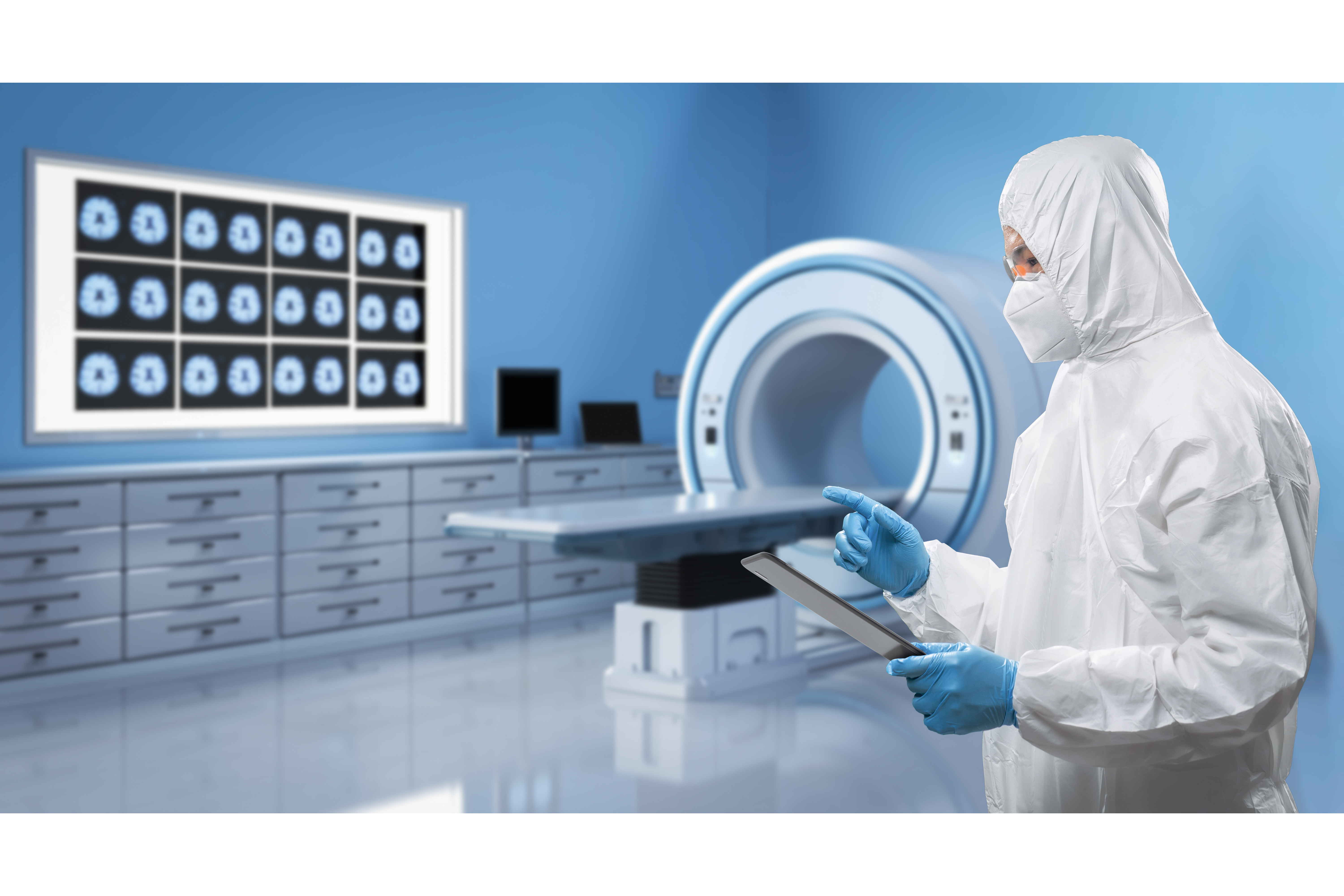In today’s medicine, there’s a cool tool called Magnetic Resonance Imaging, or MRI. It helps doctors see inside our bodies to find out what’s going on. This blog is all about how MRI works, why it’s important, and what’s coming next for this amazing technology. Let’s discuss and learn more about how MRI helps doctors keep us healthy!
What is MRI in Modern Medicine
MRI, short for Magnetic Resonance Imaging, is like a super-powered camera that takes pictures inside our bodies without using any harmful radiation. It works by using strong magnets and radio waves to create detailed images of our organs, bones, and tissues.
Inside the MRI machine, there’s a big magnet that creates a magnetic field around the body. When you lie inside the machine, the magnetic field makes the water molecules in your body align in a certain way.
Then, radio waves are sent through your body, causing these aligned molecules to produce signals. These signals are picked up by a computer and turned into detailed images that doctors can use to see inside your body and diagnose any health issues you might have. So, MRI is like a magical window that lets doctors see what’s going on inside us without needing to cut us open!
Applications of MRI in Medical Imaging:
MRI is used in many different areas of medicine to help doctors diagnose and treat various health conditions. Here are some ways MRI is used:
- Brain Imaging: MRI can detect problems in the brain, like tumors, strokes, or diseases like multiple sclerosis. It gives doctors detailed pictures of the brain’s structure and helps them plan surgeries or treatments.
- Musculoskeletal Imaging: MRI is great for looking at muscles, bones, and joints. It helps doctors see injuries, like torn ligaments or fractures, and diagnose conditions like arthritis.
- Cardiac Imaging: MRI can also be used to look at the heart and blood vessels. It helps doctors see how well the heart is working and find problems like heart disease or valve disorders.
- Abdominal and Pelvic Imaging: MRI is useful for examining organs in the abdomen and pelvis, such as the liver, kidneys, or reproductive organs. It helps doctors diagnose conditions like tumors, infections, or digestive problems.
- Breast Imaging: MRI is sometimes used alongside other tests, like mammograms, to screen for breast cancer or evaluate breast abnormalities. It provides detailed images that help doctors detect cancer at an early stage.
Advantages of MRI over Other Imaging Modalities:
MRI offers several advantages compared to other imaging techniques, making it a preferred choice in many clinical scenarios:
- Non-invasive Nature: Unlike X-rays or CT scans, MRI does not use ionizing radiation, making it safer for patients, especially for repeated or pediatric imaging.
- High-resolution Imaging: MRI produces detailed images with excellent contrast, allowing for better visualization of soft tissues like muscles, nerves, and organs.
- Versatility: MRI can be used to image almost any part of the body, from the brain to the joints to the abdomen, making it a versatile tool in medical diagnostics.
- Multi-Planar Imaging: MRI can acquire images in multiple planes (sagittal, coronal, and axial), providing comprehensive anatomical information from different perspectives.
- Functional Imaging Capabilities: Advanced MRI techniques like functional MRI (fMRI) can assess brain function by detecting changes in blood flow, offering insights into neurological conditions such as Alzheimer’s disease or epilepsy.
- Contrast Agents: MRI contrast agents, usually made of gadolinium, can be used to enhance certain tissues or highlight abnormalities, improving diagnostic accuracy.
Evolving Technologies and Innovations in MRI:
The field of MRI is constantly evolving, with ongoing research and technological advancements leading to innovative techniques and improvements in imaging quality and efficiency. Some notable developments include:
- Advanced Hardware and Software: MRI machines are continuously being upgraded with improved hardware components, such as higher field strengths and more sensitive radiofrequency coils, to enhance image quality and reduce scan times. Additionally, sophisticated software algorithms are being developed to optimize image reconstruction and processing.
- Emerging Techniques: New MRI techniques are being developed to address specific clinical needs. For example, diffusion MRI can assess the movement of water molecules in tissues, providing insights into tissue microstructure and aiding in the diagnosis of conditions like stroke or brain tumors. Functional MRI (fMRI) measures changes in blood flow in the brain, allowing for the mapping of brain activity and research into neurological disorders.
- Integration of Artificial Intelligence (AI): AI and machine learning algorithms are being integrated into MRI systems to automate image analysis, improve diagnostic accuracy, and streamline workflow. These AI-driven tools can assist radiologists in tasks such as lesion detection, image segmentation, and disease classification, ultimately enhancing the efficiency and accuracy of MRI interpretation.
- Hybrid Imaging Modalities: MRI is increasingly being combined with other imaging modalities, such as positron emission tomography (PET) or computed tomography (CT), to provide complementary information and improve diagnostic capabilities. For example, PET-MRI hybrid systems offer both anatomical and functional information in a single imaging session, enabling more comprehensive assessment of disease processes.

These advancements in MRI technology hold great promise for the future of medical imaging, facilitating earlier and more accurate diagnosis, personalized treatment planning, and improved patient outcomes. As research continues and technology evolves, the role of MRI in modern medicine is expected to expand further, revolutionizing healthcare delivery and patient care.
Conclusion:
In conclusion, Magnetic Resonance Imaging (MRI) stands as a transformative force in modern medicine, providing non-invasive and high-resolution imaging that aids in precise diagnosis and treatment planning. From brain tumors to musculoskeletal injuries, MRI plays a crucial role across various medical specialties, enhancing patient care and outcomes. As technology continues to advance, the future of MRI holds promise for personalized medicine, improved accessibility, and the development of novel imaging biomarkers. With its ability to peer inside the human body with unparalleled detail, MRI remains a cornerstone of medical imaging, shaping the landscape of healthcare and paving the way for a more precise and effective approach to diagnosis and treatment.

